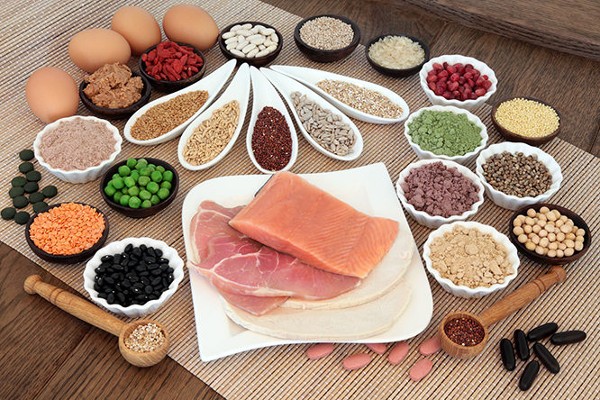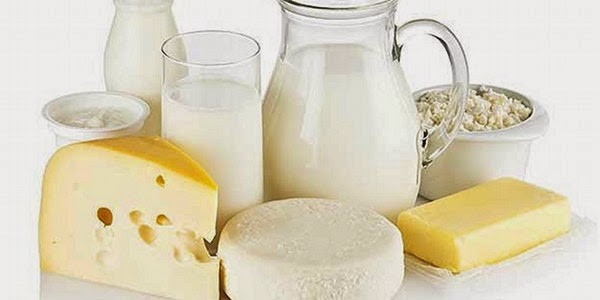By Natasha Longo

There’s so much hype around getting enough protein that few of us stop and think about what type of protein we’re ingesting and the differences that exist between different proteins. What’s the difference between animal and vegetable protein? Which has more usable protein? Which is more efficient or healthier and does it matter?
Proteins are macronutrients that people must consume in abundance to meet the body’s need for tissue synthesis and repair. Protein makes up about 20 percent of the weight of the heart, skeletal muscles and liver, and 10 percent of brain tissue. The quality of protein you consume can significantly affect your health. With an increasing number of vegans and vegetarians, the quality of protein in vegetable versus animal sources is a prevalent topic.
Even though animal protein is “more complete” than many vegetable proteins, it does not automatically make it better. For example, beef contains only about 20% usable protein. Spirulina and chlorella, on the other hand, average 75-80% usable protein — and these vegan options are just as complete and just as bioavailable. Combine the right yellow pea and rice protein and you can hit numbers approaching 85-90% usable protein — again with high protein bioavailability.
The primary difference between animal and plant proteins is their amino acid profiles and it is those profiles that direct the rates at which the absorbed amino acids are put to use within the body. Some animal based proteins are more similar to human proteins, and may be used more rapidly than plant proteins, however that doesn’t mean they will be efficiently used. When we restore any deficient amino acids in a plant protein, we get a response rate equivalent to animal proteins.
Another factor to consider when we compare proteins is that there really is no such “thing” as dairy protein or whey protein or soy protein or any other “type” of protein, for that matter. Each source of protein is actually a conglomeration of several protein fractions that we lump together under their source name. Dairy protein, for example, actually describes a group of proteins that includes casein.
The efficiency, or degree to which dietary proteins can be used for building parts of the human body, is determined by five primary factors.
- The type and relative amounts of amino acids — particularly any shortage of a needed essential amino acid.
- The size and structure of the protein molecule itself. (This relates to our discussion of protein fractions immediately above.)
- The amount of branched chain amino acids (BCCAs) present. BCCAs are defined by their unique structure and include leucine, isoleucine, and valine. These three amino acids are special in that they are metabolized in the muscle as opposed to the liver. The greater their presence in a protein, the higher the protein’s bioavailability.
- Leucine is the most readily oxidized BCAA and therefore the most effective at causing insulin secretion from the pancreas. It should be noted that too much leucine can disrupt the tryptophan/niacin pathway and contribute to pellagra. It may also increase ammonia levels in the body.
- Isoleucine stabilizes and regulates blood sugar and energy levels.
- Valine assists in muscle metabolism, tissue repair and the maintenance of proper nitrogen balance in the body. However, too much valine can cause crawling sensations in your skin and hallucinations.
- How the protein comes packaged with other components such as pectin that may inhibit its digestion.
- The lack of enzymes necessary for the breakdown of that particular protein.
But beyond bioavailability, we also need to consider factors such as allergies and digestive problems such as gas, bloating, and constipation. In truth, it doesn’t matter how “good” a protein is if you can’t eat it.
Protein bioavailability has much to do with the type and relative amounts of amino acids present in a particular protein molecule. Yes, the body has the ability to convert and make many of the amino acids it needs, but the nine essential amino acids cannot be manufactured by the body and must be supplied by the food we eat. Most animal proteins, by definition, contain all of the essential amino acids in sufficient amounts. The protein of cereals, most beans, and vegetables may contain all the essential amino acids, but the amounts in these plant foods is often less than ideal, particularly the branch chain amino acids. However, this is easy to compensate for, and it is possible to get plant proteins that are extremely concentrated.
It’s important to note, that almost all foods have protein. Not only do your nuts, seeds, legumes, and animal products have protein, but so do your grains, vegetables, and fruits. If you eat a largely plant based diet and count on these foods to provide you with the protein you need, focus on eating a variety of foods at each meal. If you pair different plant based products together you are more apt to make an incomplete protein meal more complete.
With that in mind, let’s take a look at the primary sources of protein and their pros and cons.
Animal Versus Vegetable Protein
Without going into an opinion on the morality or ethicality of eating meat. The purpose here is merely to evaluate the health value of different protein sources, particularly as they relate to their use as a “supplemental” protein source.

Protein bioavailability has much to do with the type and relative amounts of amino acids present in a particular protein molecule. Yes, the body has the ability to convert and make many of the amino acids it needs, but the nine essential amino acids cannot be manufactured by the body and must be supplied by the food we eat. Most animal proteins, by definition, contain all of the essential amino acids in sufficient amounts. The protein of cereals, most beans, and vegetables may contain all the essential amino acids, but the amounts in these plant foods is often less than ideal, particularly the branch chain amino acids. However, this is easy to compensate for, and it is possible to get plant proteins that are extremely concentrated. With that in mind, let’s take a look at the primary sources of protein and their pros and cons.
Meat Protein
When most people in the developed world think protein, they think beef. We’re talking steaks, hamburgers, hot dogs, roast beef. We’re talking “hungry man food.” If you have any doubt, just look at pictures of a training table for most athletes. But how good is meat as a primary source of healthy protein?
On the plus side, meat protein is complete. It contains all the essential amino acids. And it’s not particularly allergenic. On the other hand, it’s not particularly concentrated — containing only about 20% usable protein by weight. And meat protein is not particularly nutrient dense, inflicting a significant number of calories on your body along with the protein. It also tends to promote colon cancer — particularly if grilled at high temperatures. And unless you’re buying organic grass fed beef (you absolutely want organic), it also comes complete with high levels of antibiotics, pesticides, hormones, an unhealthy ratio of Omega-6 to Omega-3 fatty acids, and the risk of E. coli contamination — not to mention high levels of saturated fat.
Most meat eaters may be unaware that more than 70% of all beef and chicken in the United States, Canada and other countries is being treated with poisonous carbon monoxide gas. It can make seriously decayed meat look fresh for weeks.
You’ll get about 23 grams of protein in a three ounce serving of beef, along with about 15 grams of fat. The biological value is about 70, and the net protein utilization is about 73.
Poultry Protein
Chicken and turkey are considered the “lighter,” “less expensive” alternatives to beef. And in fact, lean turkey or chicken, without the skin, will provide about 27 grams of protein in a three ounce serving, along with about 2-3 grams of fat. Poultry has a biological value of about 80.
But unless you’re eating organic, chicken protein, it also contains large amounts of antibiotics, arsenic (oh yes, it’s a government approved additive), and of course chicken leukosis cancer tumors.
Fish Protein
Fish is a good high protein food. It contains reasonable amounts of quality protein, virtually no carbohydrates, and little saturated fat. Although the amount of fat and protein are about equal (5 grams in a 3 ounce serving), the fats tend to be highly beneficial Omega-3 fatty acids. Depending on the type of fish, its biological value ranges from 70-80, and it has a net protein utilization of 81, about the same as that found in poultry.
Unfortunately, if wild caught, it’s likely to have high levels of mercury, and if farm-raised, high levels of antibiotics and dioxin.
Seafood is one of our last wild food sources. Fish are a vital part of many people’s diets because of potential health benefits, fresh taste and the connection that fish give us to our oceans and coasts. Around half of the world’s seafood, however, now comes from farms rather than from the wild. In some of these farms, fish are grown in crowded, polluting cages and may be fattened on commercially prepared diets. (Read: Factory-Fed Fish: How The Soy Industry is Expanding Into The Sea)
Pork Protein
Back in the late 80’s television ads helped to turn around declining demand for pork. The National Pork Board launched their remarkable repositioning campaign, “Pork, The Other White Meat.” It worked. The campaign effectively made people equate pork to chicken, as opposed to beef.
Then came the bird flu scare, and suddenly any association with chicken was unacceptable as millions of chickens were being slaughtered worldwide to prevent the spread of avian flu. At that point, the pork producers launched their, “Pork, It’s Not Chicken” campaign.
That said:
- The old dictum that pork is unhealthier than beef or chicken simply is no longer true — unless you are still eating pork raised in a third world country that allows pigs to feed on garbage — or corpses for any of you who saw the movie Snatch.
- Also, the old myth that pork is more indigestible than meat is likewise not true. That was just another way to warn people off pork when it was garbage fed. In fact, pork is slightly more digestible than beef.
- But it’s also slightly higher in fat.
- It has all of the other problems associated with meat — high in antibiotics, etc.
- And “free range pork” is remarkably rare. Virtually all of the pork available in the United States comes from animal factories that are inherently cruel, literally driving the animals mad in response to their “living” conditions.
Milk Protein
The National Institute of Diabetes and Digestive and Kidney Diseases (NIDDK) estimate that 30 to 50 million Americans are lactose intolerant. These are people who cannot digest lactose, the sugar found in dairy products. According to the FDA, symptoms include gas, stomach cramps, diarrhea, etc. However, many others are also allergic to dairy products (lactose intolerance is not technically an allergy), specifically the proteins found in milk. In any case, these poorly digested bovine antigens (substances that provoke an immune reaction) like casein become “allergens” in allergic individuals. Dairy products are one of the leading causes of food allergies, often revealed by diarrhea, constipation, and fatigue. Many cases of asthma and sinus infections are reported to be relieved and even eliminated by completely cutting out dairy. The exclusion of dairy in your diet, however, must be 100% to see any real benefit. An 8 oz glass of milk will provide 8-9 grams of protein and 5-10 grams of fat. It has biological value of 80-90 and a net protein utilization of about 81.

Whey Protein
When it comes to protein supplementation now, whey is king. It has pushed aside milk based protein supplements, egg proteins, and soy proteins to totally dominate the field. Why? Quite simply is has an extremely high biological value ranging from 90-100 for whey concentrate and from 100-150 for whey isolate. It’s also high in the branch chain amino acids and is quickly absorbed by the human body.
Unfortunately, it’s also highly allergenic. The problem isn’t lactose or casein (a major allergen in milk) since they are both either removed or at significantly reduced levels in whey. However, the main protein fractions in whey (beta-lactoglobulin, alpha-lactalbumin, and bovine serum albumin) are all highly allergenic. In addition, whey tends to have much more cholesterol in it than would normally be recommended.
A question worth considering is how many people are actually allergic to dairy and whey? Officially, that number is only about 1-3%. However, when you redefine that number to include anyone who generates extra mucous from eating dairy, suffers from constipation from eating dairy, or feels bloated after eating dairy, you’re probably looking at numbers closer to 60-70%. And if you actually expand the number to include anyone who suffers from mild systemic inflammation after eating dairy — and thus retention of water — some believe that number approaches 100%. There are no official studies to support these numbers; they are just the numbers that some people have seen who work with athletes, martial artists, and even bodybuilders.
And finally, whey contributes to two conditions, aminoacidemia and intestinal toxemia. Check out our page on “protein concerns” for more information.
As a side note, the entire whey industry results from a desire to extract commercial value from what was once a waste product of the cheese industry. When you curdle milk to make cheese, it splits the milk into two components, curds and whey. The curd is the “solid” part that’s used to make cheese. The liquid whey used to be considered a waste product, but then manufacturers began to heat the whey to evaporate the water and concentrate the protein in it. Now, there are more advanced filtration techniques available to concentrate the protein down and leave it in forms, such as whey isolate, that are more readily used by the body. But it still has many of the same problems.
Egg Protein
At one time, before sophisticated whey processing emerged, eggs were considered the optimum protein supplement. In fact, the whole biological value scale is based on egg protein ranking a benchmark 100. However, eggs are arguably the most allergenic of all proteins. Oh, and for those of you who eat only egg whites, it should be noted that the allergenic proteins are concentrated in the egg whites.
Egg Whites Versus Whole Eggs
Okay, while we’re on the subject, let’s talk about the myths associated with eggs.
First of all, contrary to popular belief, because whole eggs have a better amino acid profile than egg whites, the protein is more bioavailable in whole eggs than in egg whites. Whole eggs are also much more nutrient dense than egg whites since egg yolks contain all of the vitamins, minerals, antioxidants, and Omega-3 fatty acids (if you’re eating free range chicken eggs). In fact, other than protein, egg whites are pretty much nutrient dead. And as for cholesterol concerns, recent studies do not support them.
But, all that said, the protein in eggs can be highly allergenic.
Soy Protein
Soy protein is not an effective alternative. It is high in allergens (some 28 different proteins present in soy have been found to bind to IgE antibodies). It’s also worth noting that the more soy protein you eat, the more likely you are to develop allergies to it — and the more severe those allergies are likely to become. Soy also blocks the absorption of important minerals such as calcium unless the phytates have been removed, and soy contains high levels of phytoestrogens, which although beneficial in moderate amounts, can be counter-productive in large amounts — particularly for children.
In addition, although its biological value is not bad at 70-80, it’s net protein utilization at 61 is quite low. In fact, unless it has been fermented, soy protein contains potent enzyme inhibitors that block the action of trypsin and other enzymes needed for protein digestion. This can create significant amounts of gas, in addition to promoting pathological conditions of the pancreas, including cancer. As a side note, soy protein was once considered a waste product of the soy oil industry and used almost exclusively as cattle feed.
Soy Lecithin has been lingering around our food supply for over a century. It is an ingredient in literally hundreds of proceesed foods, and also sold as an over the counter health food supplement. Scientists claim it benefits our cardiovascular health, metabolism, memory, cognitive function, liver function, and even physical and athletic perfomance. However, most people don’t realize what soy lecithin actually is, and why the dangers of ingesting this additive far exceed its benefits.
Chlorella Protein
Although it looks similar, chlorella is an entirely separate plant from spirulina and blue green algae. In fact, it belongs to an entirely different kingdom and phylum.
Hemp Seed Protein
Hemp seed protein has some unique features. First, 65% of the total protein content of hemp seed comes from the globular protein edestin, which is easily digested, absorbed, and utilized by the human body. As a side note, it closely resembles the globulin found in human blood plasma, which is vital to maintaining a healthy immune system. As such, edestin has the unique ability to stimulate the manufacture of antibodies against foreign invaders. It is also hypoallergenic.
As a complete food, hemp seed is great, one of the super foods, but as a protein supplement, less so. As straight ground hemp seed, it is only about 30% protein. Even in concentrated form it will only push to around 50% protein. Also, although the proteins in hemp (edestin and albumin) are great immune builders, they are less effective as muscle builders.
Like other oil seeds, the hemp nut consists mainly of oil (typically 44%), protein (33%) and dietary fiber and other carbohydrates (12%, predominantly from residues of the hull). In addition, the nut contains vitamins (particularly the tocopherols and tocotrienols of the Vitamin E complex), phytosterols and trace minerals. Overall, hemp’s main nutritional advantage over other seeds lies in the composition of its oil, i.e. its fatty acid profile, and in its protein which contains all of the essential amino acids in nutritionally significant amounts and in a desirable ratio.
Buckwheat, millet, beans, etc.
Yes, a number of grains and beans are technically complete proteins and can serve as a foundational protein for vegetarian diets. However, they tend to be unbalanced in their amino acid ratios. This means that you have to eat them in proper combinations — and you have to eat more of them than of animal proteins to obtain an equivalent value.
They are great for what they are (foundational foods), but they are not adequate for use as a “protein supplement” as required by athletes, people looking to lose weight, senior citizens, or people looking to recover from a prolonged illness. To build muscle mass, you need a more concentrated source of protein and a better mix of branch chain amino acids.
Conventional cereals are filled with soy and wheat which have been largely modified from their ancient and original forms. Consequently, the digestibility for many cereals is poor and health consequences are detrimental. Using amaranth, millet or buckwheat flour to replace traditional flours can lower the glycemic response in breakfast cereals spelling new opportunities for manufacturers.
Cyanobacteria protein: spirulina and blue green algae
Spirulina is one of the great super foods. It is approximately 65 to 71 percent complete protein in its natural state. This is higher than virtually any other unprocessed food. (Note: whey protein, for example, has to be extracted and concentrated from dairy to reach higher levels.) And unlike most other forms of protein, the protein in spirulina is 85-95% digestible; again, one of the highest levels available. And finally, since spirulina has no cellulose in its cell walls, it is extremely easy for the body to break it down. In fact, its amino acids are delivered to the body for almost instant absorption.

So what’s wrong with it?
First, it’s not inexpensive. Klamath Lake blue green algae (a close cousin of spirulina — they’re both cyanobacteria) runs $40-80 a lb. Generic spirulina runs $15-40 a lb.
But $15 a lb would not be too much to pay for a high quality protein source, except for the taste — somewhere between seaweed and grass. In small amounts, 1-4 grams a day in capsule form, it’s easy enough to take. But if you’re an athlete or bodybuilder or someone looking to recover from injury or illness and looking for 70-200 mg a day of protein, eating that much seaweed and grass could be tough for most people to manage.
And finally, about 30% of the worlds’ population can’t handle spirulina — being either allergic to it, or suffering from toxins present in the spirulina that may have been absorbed from the water in which the spirulina is grown. (This is particularly a problem with algae grown in public bodies of water such as Klamath Lake, which are boating lakes.)
Rice And Yellow Pea Protein
A combination of rice and yellow pea protein might sound unappetizing to some. And, in fact, straight rice protein tends to be chalky in texture and unpleasantly blah in taste. But if done right, the combination of rice and pea protein actually provides one of the best tasting protein concentrates available. With that in mind…
Rice Protein
Standard cooked rice has a protein content of only 5%-7%. To make concentrated rice protein, whole brown rice is ground into flour, then mixed with water. Natural enzymes are then added sequentially to break down and separate out the carbohydrates and fibers from the protein portion of the slurry. Since the process is enzyme based, temperature must be kept low to preserve the enzyme activity levels. Low temperature and chemical free processing prevent the denaturing of amino acids, as is frequently seen in soy and dairy processing. The end product is 80-90% pure, hypoallergenic, easily digested protein. After four hours, the body digests over 86% of all ingested rice protein, compared with about 57% for soy. In the end, rice protein has a biological value of between 70-80, a net protein utilization of about 76, and a total absorption ration of some 98%.
Note: rice protein is high in the amino acids cysteine and methionine, but tends to be low in lysine, which negatively impacts its bioavailability. If you can raise its lysine levels, you can dramatically increase its bioavailability.
Pea Protein
When it comes to perception, more people have a problem with the “idea” of pea protein than with rice protein. But in fact, pea protein has a very mild, pleasantly sweet taste. It’s one of the better tasting proteins. Pea protein is the concentrated natural protein fraction of yellow peas. The process used for concentrating pea protein is water based, making the end product very “natural.”
The Beneficial Combination of Rice and Pea Proteins
As mentioned above, rice protein is high in cysteine and methionine, but tends to be low in lysine. Yellow pea protein, on the other hand, tends to be low in the sulfur containing amino acids, cysteine and methionine — but high in lysine. The bottom line is that when used in combination, rice protein and yellow pea protein offer a Protein Efficiency Ratio that begins to rival dairy and egg — but without their potential to promote allergic reactions. In addition, the texture of pea protein helps smooth out the “chalkiness” of rice protein. Like rice protein, it is hypoallergenic and easily digested.




